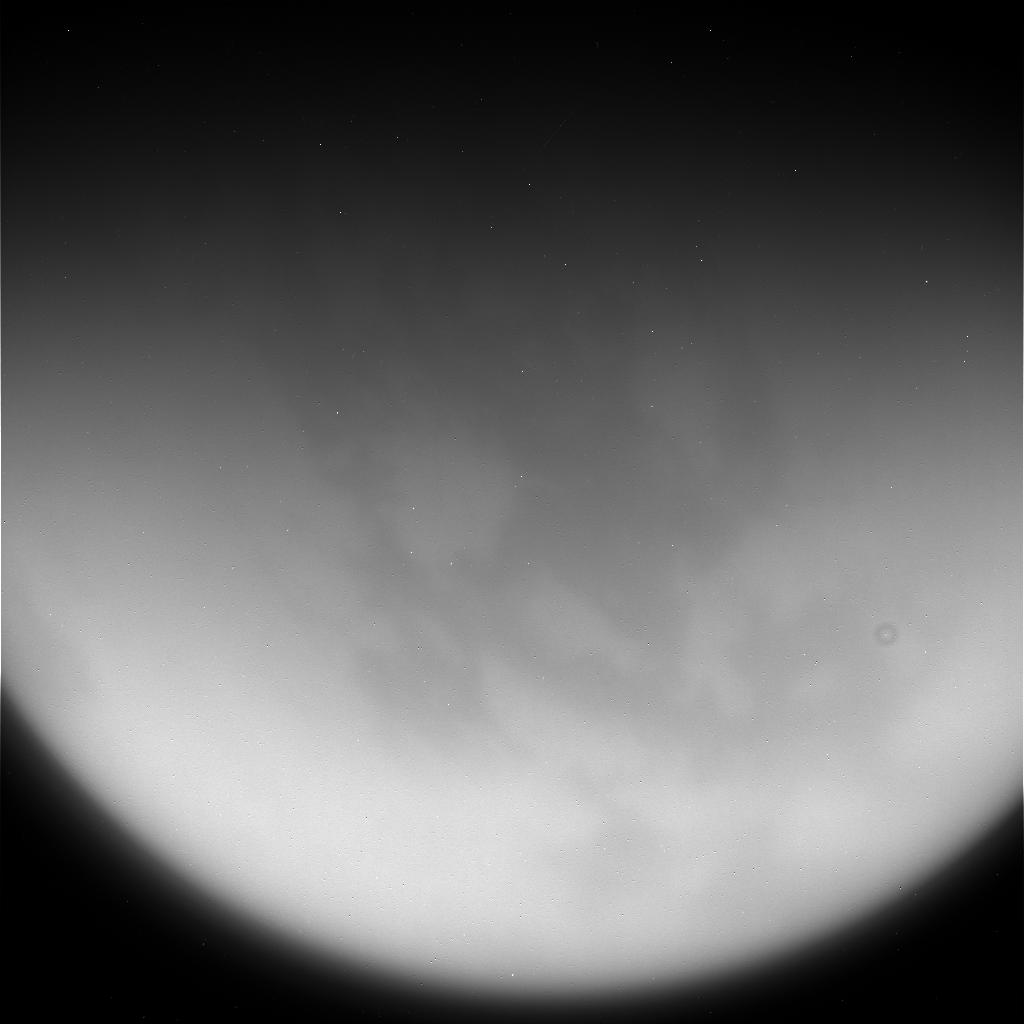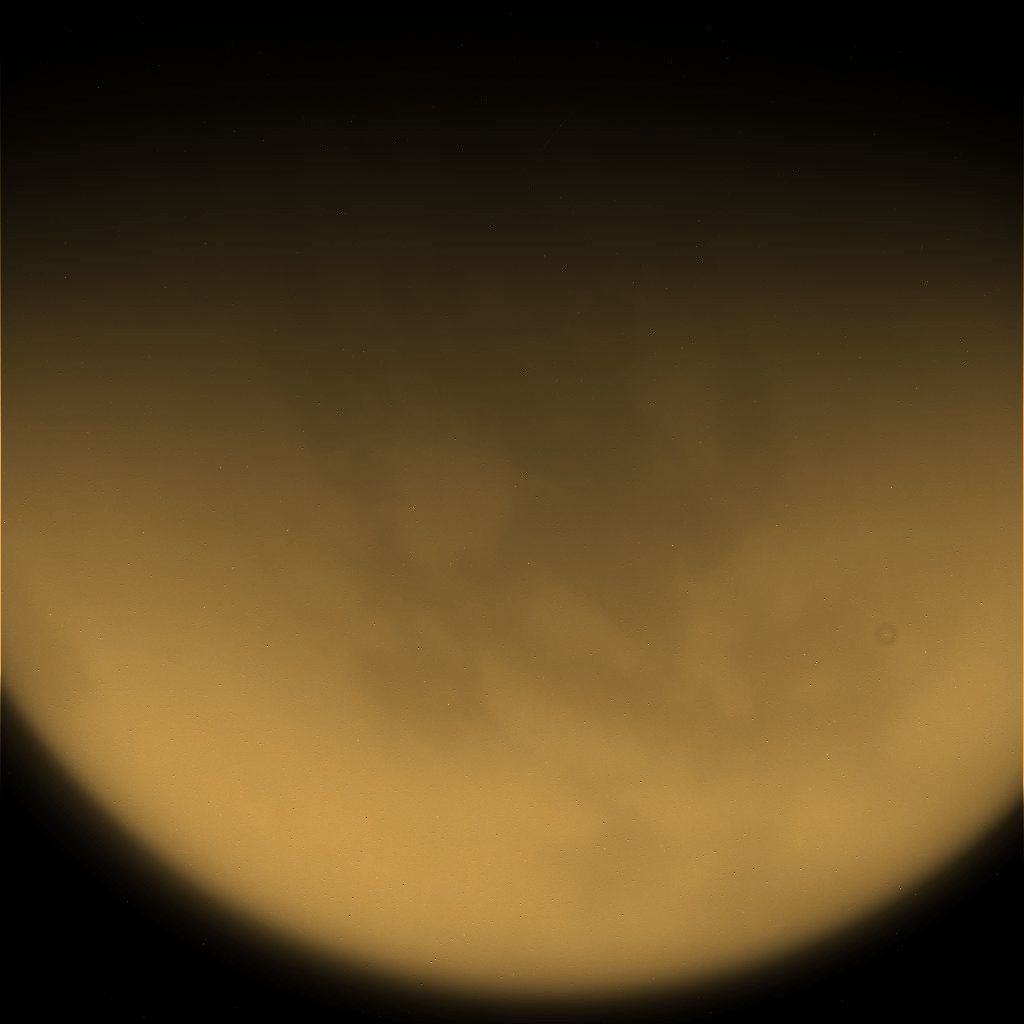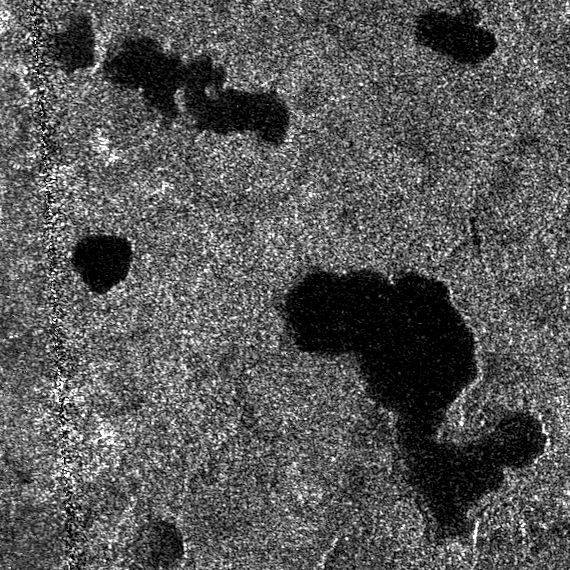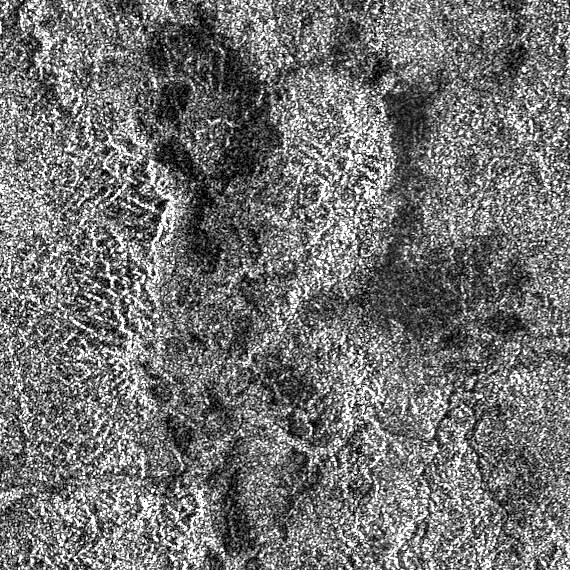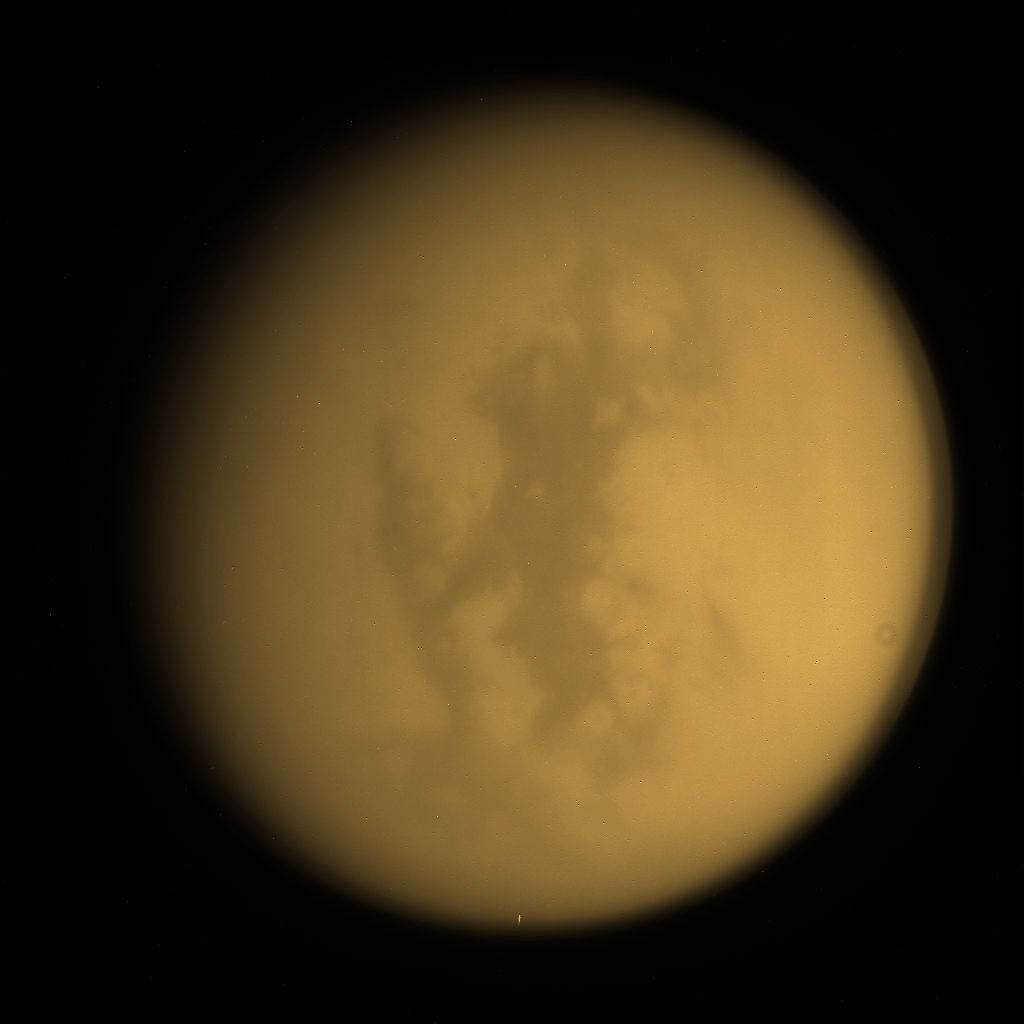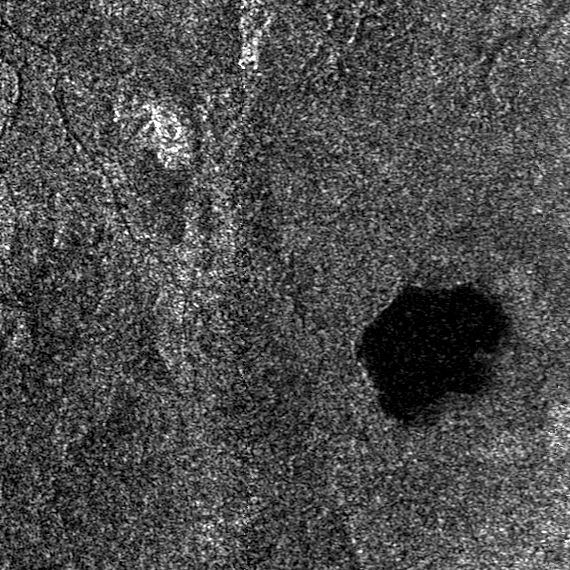|
The image in the upper part of the table, whose file name is N00287842.jpg, represents a raw view of Saturn's largest moon
Titan acquired on August 27, 2017 with the Narrow-Angle Camera of the Cassini spacecraft. The view was captured on the
basis of the CL1 filter and of the CB3 filter. The image had not been validated or calibrated at the time of the observation
and a validated or calibrated version was going to be archived with the Planetary Data System proposed by NASA. The image in
the lower part of the table represents a colorized version of the original view.
Credit for the original view:
NASA/JPL-Caltech/Space Science Institute.
Credit for the colorization process of the original view:
Marc Lafferre, 2022.
|
